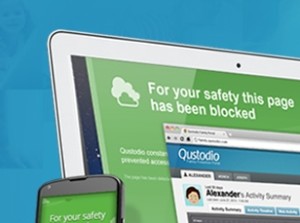 Be the eyes on your child’s location, website views, telephone calls, text and instant messages. Know who’s talking to your child and how often. Block your child from playing computer games when they should be doing homework. Reward them when they limit themselves to the agreed upon times. Make your teen daughter think you have psychic powers when you magically know exactly when the 20 year old guy down the street has arranged to meet her.
Be the eyes on your child’s location, website views, telephone calls, text and instant messages. Know who’s talking to your child and how often. Block your child from playing computer games when they should be doing homework. Reward them when they limit themselves to the agreed upon times. Make your teen daughter think you have psychic powers when you magically know exactly when the 20 year old guy down the street has arranged to meet her.
Ever hear someone say “Give up! You can’t watch them all the time”? The fact that you work, can’t be home all the time and have to leave your kids everyday needn’t prevent you from being “Parent Johnny-on-the-spot”. With the help of a number of (some even free) downloadable apps for your computers, phones, tablets and other electronic devices, you can now see everywhere your child goes on the web as well as everywhere your child goes on the map. Now, you don’t have to wonder when you call them, whether they really are at home or the library, whether they really have been working on their homework or the next video game level. These apps just might be a parent’s best friend!
Qustodio, as featured on the Steve Harvey show, is one such app.
Available from Qustodio.com , this free download provides a report of your child’s activities. It can be placed on phones and computers without the user knowing it’s there. You can track it in real time from your desk at work or your cell phone.
 Mama Bear is a smart app for smartphones. It shows your child’s time of arrival and departure at physical locations, monitors Instagram photos posted, texts, tweets & messages for keywords & offensive language. It can also monitor your teen’s driving speed. Love it!
Mama Bear is a smart app for smartphones. It shows your child’s time of arrival and departure at physical locations, monitors Instagram photos posted, texts, tweets & messages for keywords & offensive language. It can also monitor your teen’s driving speed. Love it!
Other apps that scored high in reviews are Phone Sheriff, mSpy and Mobile Spy.

 In the report, Children’s Health Spending: 2009 – 2012, issued by the Health Care Cost Institute, an increase in prescription drug use by children and teens in the United States was noted along with increasing hospital admissions for substance abuse and mental health problems. While girls were more likely to be prescribed antidepressants, boys were more frequently prescribed ADHD drugs including amphetamines, cerebral stimulants, respiratory drugs and miscellaneous anorexigenics. These increases affected boys beginning at ages 4 to 8 years while girls were more likely to begin receiving prescriptions for these central nervous system drugs in later years, ages 9 to 13.
In the report, Children’s Health Spending: 2009 – 2012, issued by the Health Care Cost Institute, an increase in prescription drug use by children and teens in the United States was noted along with increasing hospital admissions for substance abuse and mental health problems. While girls were more likely to be prescribed antidepressants, boys were more frequently prescribed ADHD drugs including amphetamines, cerebral stimulants, respiratory drugs and miscellaneous anorexigenics. These increases affected boys beginning at ages 4 to 8 years while girls were more likely to begin receiving prescriptions for these central nervous system drugs in later years, ages 9 to 13.

